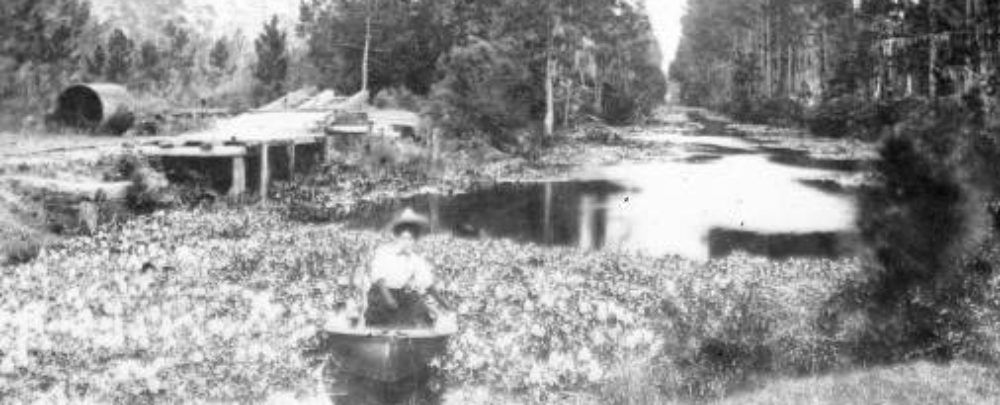 Wildlife In, On, and Around the Lake
Wildlife In, On, and Around the Lake
Living on Lake Santa Fe, we experience an abundance of shore-based, water-based, and land-based plants and wildlife. Keeping a healthy lake, a natural shoreline, and a woods-like yard insures full and continued enjoyment of these plants and animals.
Vegetation
Lake Santa Fe has a wide range of tree canopy, shrubs, underbrush and shoreline vegetation. Plants help provide habitat and food for wildlife and fish, and they ease bank erosion. They play a vital role in keeping our lake healthy, clean and safe. Our tree canopy lends privacy, provides habitat for birds, and shades our homes, reducing cooling costs. Maintaining the natural vegetation is something that we can all do to protect our paradise and maintain our investment value.
Some commonly seen trees and shrubs include Cypress, Hickory, Holly, Mixed Bays, Buttonbush, Swamp Tupelo, Red Maple, and Wax Myrtle.
Some of the emergent vegetation (plants that grow in water with leaves out of the water) that we see are Maidencane, Spatterdock, Pickerelweed, Dwarf Arrowhead, Spikerush, Banana-lily, and Sawgrass.
For more information on invasive and native plants, visit these websites:
University of Florida
Florida Fish and Wildlife Conservation Commission
Florida Exotic Pest Plant Council
Endangered Species
We have several animal and plant species in our lake area that are “listed” by state or federal authorities. Among these are the American Alligator, Florida Black Bear, Sherman’s Fox Squirrel, Southern Bald Eagle, Flatwoods Salamander, Gopher Tortoise, Wood Stork, Eastern Indigo Snake, Little Blue Heron, and the Alligator Snapping Turtle.
Birds
Supported by trees, shrubs and shoreline vegetation, birds (permanent and migratory) are quite numerous on Lake Santa Fe. One area used as a rookery by many types of birds is located in the treetops on the eastern shore of Little Lake Santa Fe.  Wading Birds & Water Fowl
Wading Birds & Water Fowl
Feeding in vegetation along the shoreline we find Herons, Egrets, Wood storks, White ibis, and Bitterns. In the water and along the shore we see Cormorants, Anhinga, Loons, and a variety of ducks.
Larger birds found here include Owls, Hawks, Vultures, Swallow-tailed kites, Crows, Kingfishers, Ospreys, Bald Eagles, Seagulls, Blackbirds, Turkeys, Falcons, and Sandhill cranes.
Small birds seen here include Hummingbirds, Finches, Robins, Wrens, Warblers, Sparrows, Thrashers, Bluebirds, Chickadees, Cardinals, Blue jays, Mockingbirds, Dove, Quail, Woodpeckers, and Titmice.
Mammals
Cover on land supports deer, raccoons, opossums, rabbits, skunks, squirrels, mice, armadillos, beavers, bears and bats (which are great for mosquito control). The elusive River Otter can sometimes be seen swimming along the shore, but are also known to climb onto docks.
Reptiles and Amphibians
A sign of a healthy lake is the abundance of lizards, skinks, turtles, and frogs that inhabit the lake and surrounding land. Alligators co-exist with humans on Lake Santa Fe, and are most often visible at dawn or dusk. 
Common non-poisonous snakes in our area are the Racer, Indigo, Corn, Rat, Kingsnake, Coachwhip, and various water snakes.
Poisonous snakes in the area are the Coral snake, Water moccasin, Diamondback rattlesnake, and Pygmy rattlesnake.
Fish
Many anglers are attracted to our lake for the excellent fishing opportunities it provides. Fishing tournaments are popular events held regularly on Lake Santa Fe. A healthy lake and shoreline are essential for a good fish population.
Game fish species of special interest here include: Sunshine bass, Large-mouth black bass, Catfish, Bream (including Bluegill and Sunfish), Speckled perch, Warmouth, and Pickerel.
Other non-game fish found here are Gar, Shiner, Carp, and Mudfish (Bowfin).
A Word about Alligators and Bears!
The presence of alligators is often considered an indication of the good health of a water body. When alligators have lost their natural fear of humans, it is often because people have been feeding them (sometimes unintentionally, when cleaning fish). Not only is it illegal to feed an alligator, it often becomes necessary to destroy the now-dangerous animal. More info at this Florida FWC webite.
Occasionally bears have been seen in rural areas along the lake, sometimes causing concern for residents. This Florida FWC website gives some excellent information on living with Florida black bears and bear safety. Some suggestions to encourage bears to remain wild include:
- Put garbage containers in a shed or a bear-proof caddy until trash day.
- Put away bird feeders. (For die hard bird feeder folks, only put out a handful of bird seed per day in a plant saucer and then bring it in at night).
- If you see a bear in your yard, and you are in a safe place, any loud noises should scare him away.
It’s a good idea to share this information, and recent sightings, with local neighbors so everyone is aware of the situation. In other words, don’t give bears any reason to become a nuisance in our area. Report human-bear conflicts to your nearest FWC regional office
For more information, visit the Florida Fish and Wildlife Conservation Commission website or call 904-758-0525
